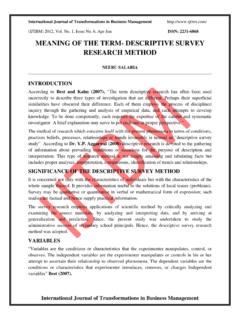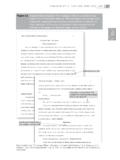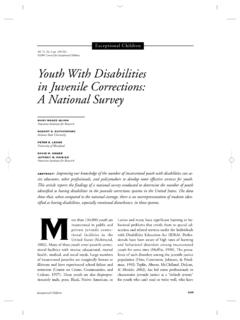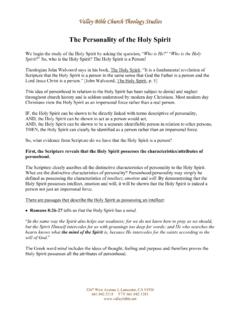Transcription of Dental public health epidemiology programme …
1 Dental public health epidemiology programme oral health survey of five-year-old children 2014-15 National protocol Version 2 This protocol aligns with the British Association for the Study of Community Dentistry (BASCD) diagnostic criteria for caries prevalence surveys and guidance on sampling for surveys of child Dental ,5 oral health survey of five-year old children, 2014-15. National protocol. 2 About public health England public health England s mission is to protect and improve the nation s health and to address inequalities through working with national and local government, the NHS, industry and the voluntary and community sector. PHE is an operationally autonomous executive agency of the Department of health . public health England 133-155 Waterloo Road Wellington House London SE1 8UG Tel: 020 7654 8000 Twitter: @PHE_uk Facebook: For queries relating to this document, please contact: Dr Gill Davies, Crown copyright 2014 You may re-use this information (excluding logos) free of charge in any format or medium, under the terms of the Open Government Licence To view this licence, visit OGL or email Where we have identified any third party copyright information you will need to obtain permission from the copyright holders concerned.
2 Any enquiries regarding this publication should be sent to [insert email address]. Published July 2014 PHE publications gateway number: 201416 oral health survey of five-year old children, 2014-15. National protocol. 3 Contents About public health England 2 1. Introduction 4 2. Aim of the survey 4 3. Objectives 4 4. Sample 5 5. Consent 6 6. Personnel 8 7. General conduct of the survey 8 8. Fieldwork 10 9. Collection of data general information 11 10. Collection of non-clinical data 12 11. Collection of clinical data 15 12. Reporting of data 20 13. References 21 14. Table of appendices 23 oral health survey of five-year old children, 2014-15. National protocol. 4 1. Introduction Local authorities have been responsible for gathering information on the health needs of their local populations since April 2013, following the white paper, Equity and Excellence; Liberating the This imperative is described in the health and Social Care Act 2012, underpinned by Statutory Instrument 2012 number 3094,2 and Choosing Better oral Leadership and structures supporting the former NHS Dental epidemiology programme transferred into public health England (PHE) on 1 April 2013.
3 The transformation of the programme within PHE is almost complete and some terms have, of necessity been changed. This protocol has been produced during the transition phase and best descriptive terms available at that time are used. It has been agreed that during the academic year 2014-15 the population group for scrutiny would be five-year olds attending mainstream schools. Surveys of this age group provide an insight into Dental health and associated child rearing practices at a key life stage. The findings will allow local authorities to monitor this age group, which has a public health outcomes framework (PHOF) indicator. It will also allow for longitudinal surveys of children who were examined as three-year olds in 2012-13. 2. Aim of the survey The aim of the survey is to measure the prevalence and severity of Dental caries among five-year-old children within each lower tier local authority.
4 This information can be used to: Enable local authorities to meet their responsibilities with regard to health needs assessments. Inform part of a health needs assessment, particularly joint strategic needs assessments. Provide comparisons with children of the same age in previous years (2008 and 2012) to permit monitoring of the PHOF measure. Inform the local oral health improvement strategy. Provide standardised information for comparison locally, regionally, between countries of the UK and internationally 3. Objectives To examine five-year old children using caries diagnostic criteria and examination techniques based on those agreed by the British Association for the Study of Community Dentistry (BASCD), diagnostic criteria for caries prevalence surveys4 and using BASCD-recommended sampling procedures described in BASCD guidance on sampling for surveys of child Dental health .
5 A BASCD co-ordinated Dental epidemiology programme quality oral health survey of five-year old children, 2014-15. National protocol. 5 4. Sample The primary sampling unit will be local authority boundaries at unitary, metropolitan borough or lower tier level, as has been the case in all recent surveys of this population group. survey population The survey population is defined as all those children attending state funded primary schools of all classifications within the local authority who have reached the age of five, but have not had their sixth birthday on the date of examination (excluding special schools). Age eligible children will have dates of birth that fall within the widest range of dates of birth October 2008 to May 2010 (See appendix K which also helps to identify the narrower ranges for examination dates in each month).
6 A minimum sample size of 250 examined children is required per lower-tier local authority, from a minimum of 20 schools. This is unlikely to produce a sufficiently large sample to facilitate local planning for many areas, in which case larger samples will be required. Where larger samples are drawn the children selected may need to be coded to allow a weighted estimate of local authority mean to be produced where necessary. Details of these requirements and the need for local stratification will be determined by local authorities with advice from consultants in Dental public health (CsDPH) in PHE Centres or other advisers in Dental public health to local authorities, in liaison with Dental managers/directors of the agencies undertaking the surveys. PHE Dental epidemiology co-ordinators (DECs) must be informed of proposed sampling methods so that they can confirm their validity, before the survey commences.
7 Sampling procedure Discussion is required between local authority commissioners and CsDPH in PHE Centres to establish the size and type of sample that is required to meet local needs, for example commissioning consortia within an area may each require an enhanced sample. Once this has been agreed the fieldwork team can undertake the sampling process. Detailed guidance on the required stratified sampling procedures is given in British Association for the Study of Community Dentistry (BASCD) guidance on sampling for surveys of child Dental health . A BASCD co-ordinated Dental epidemiology programme quality standard (Pine et al., 1997a).5 Advice can also be requested from the DEC in your area and from Girvan Burnside on Lists of all state maintained primary schools within each local authority area, and the numbers of pupils attending each, will be required as the first stage in the sampling process.
8 Special schools should not be included in the main sampling frame or main local authority survey file. oral health survey of five-year old children, 2014-15. National protocol. 6 In most local authority areas a two stage sampling procedure will be required for surveys of five-year-old children as there are normally more than 20 primary schools covering the local child population. A stratified sampling method which takes school size into account is described in the guidance. The school size bandings and sampling intensity described is guidance only and it may be necessary to alter this to produce larger numbers of children from whom to seek consent. For example, schools could be divided into those with fewer than 30 children aged five and those with 30 or more.
9 All of the children in the smaller school would be sampled while one in two or one in three of the larger ones would be sampled. Regardless of the selected size bandings and intensities it is still essential to calculate the correct proportions of children to be selected from small and large schools in order to ensure the sample is representative of the distribution in the overall population. This is the normal process for the quota sampling techniques used previously. Four tables need to be constructed showing how the sample will be structured and copies of these, together with details of the sampling methodology, must be sent to the DEC in your area for agreement before any schools are contacted or children selected. Efficient methods for sampling to provide ward level estimates are available and in many cases are far preferable to undertaking all-school, all-children surveys.
10 Details should be sought from the DEC in your area. Sampling for longitudinal surveys For areas that are planning to undertake the second stage of a longitudinal survey using children who were examined when they were three years old there are implications for sampling, consent, choice of examiner, identity numbers, coding of examination status and analysis. The key principles are provided in appendix P. 5. Consent Positive consent is required following the guidance by the Department of health (appendix D). It is advised that 300 children be randomly selected and consent sought from all if a minimum sample of 250 examined is the target. All consented children should then be examined even though this may mean a sample of less than 250 in some cases.







